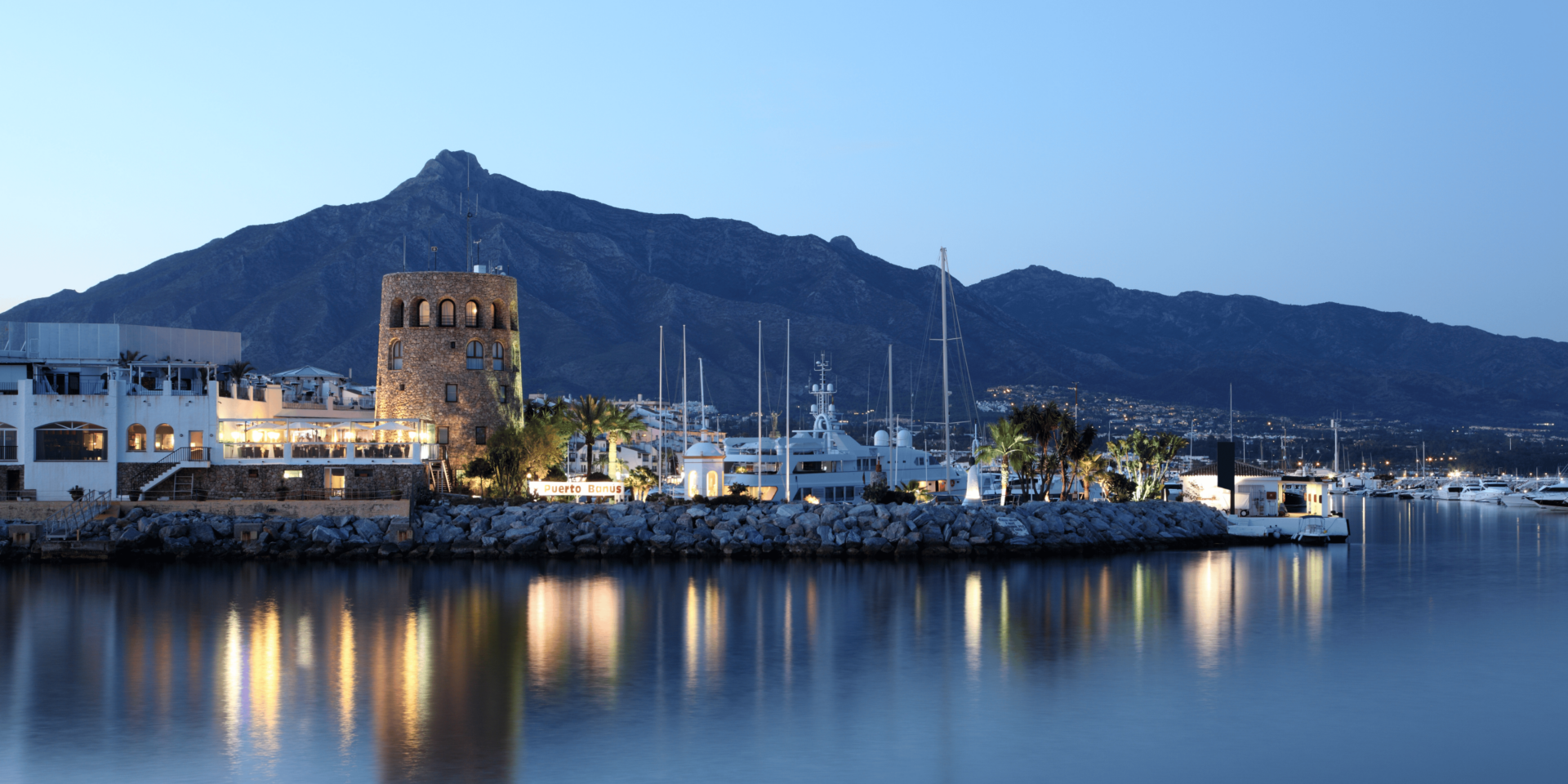Understanding the Blue Hour in Marbella
The blue hour in Marbella begins just after the sun dips below the horizon. This moment brings a soft, cool light that washes over the coastline, casting the town in a quiet, cinematic glow. Locals recognize it not just as a visual change, but as a shift in energy.
Shadows stretch across whitewashed walls, and the heat of the day loosens its grip. The air feels calm but alert. Whether you’re on the beach or in the hills, this is when Marbella feels most alive—without noise or spectacle.
Why the Blue Hour Transforms the Coastline
As daylight fades, Marbella’s coastline reveals its texture. The sea reflects deep blues and silvers, while the sky holds a soft gradient that moves quickly but leaves a lasting impression. Buildings along the shore take on richer tones, and palm trees form dark silhouettes against the horizon.
This visual clarity changes how people interact with the landscape. You no longer scan the scene for activity. You stand still and let the atmosphere come to you. The blue hour doesn’t call attention to itself—it waits for you to notice.
The Old Town’s Shift in Silence and Shade
In Marbella’s Old Town, the blue hour hides in narrow streets and shaded corners. The warm walls cool to stone-gray. Balconies once filled with sunlight now hold quiet shadows. Movement slows. Conversations drop to whispers. It’s not performance. It’s rhythm.
You pass by closed shutters, catch the scent of jasmine, and feel the shift beneath your feet. The energy is subtle, but it changes how you carry yourself. You don’t speak as much. You look longer. You take up less space. The town doesn’t push you away—it simply folds you in.
Why Hilltop Viewpoints Capture the Light Differently
Up above Marbella, the hills near Ojén and Istán offer a different blue hour experience. From these high points, the entire coast opens up. The sea flattens into layers of shadow and light. City lights begin to flicker before the sky turns dark.
In this setting, you witness more than just a shift in color—you observe Marbella breathing. The coastline below seems slower. The movement of light across it reveals how time shapes the day without needing a clock. You watch the final glow fade from rooftops and feel the stillness before night settles in.
The Role of Wind and Water in Blue Hour Senses
During the blue hour, Marbella’s breeze often carries the scent of salt, rosemary, and sun-warmed stone. These scents tell you that the day is closing. The sea begins to quiet, its waves flattening into a hush that rolls toward the shore.
At the edge of a marina or down a quiet path by the dunes, you feel this sensory shift. The temperature changes. The wind softens. The soundscape narrows. You stand still, not because you’re tired, but because the atmosphere asks for your attention.
The Marina’s Soft Glow After Dusk
Puerto Banús changes during blue hour. Earlier, it hums with activity—boats arriving, engines running, conversations rising above clinking glasses. But during blue hour, those sounds fade. The marina reflects a deep, broken mirror of color: indigo, gold, and silver shimmer on water.
Lights from nearby shops and yachts start to glow softly, not for effect but for function. You walk along the docks and notice that the air holds more space. People speak less. Some simply sit, facing the water, with no phone in hand. The moment doesn’t ask to be captured. It asks to be felt.
How the Blue Hour Shapes Memory
The blue hour leaves a mark because it happens quickly but feels slow. The light changes in minutes, yet the memory lingers. In Marbella, this moment adds texture to a day. You don’t remember everything you saw—but you remember how it felt when the color turned cool and the air held still.
You walked back from the beach. Your sandals were dusty. You passed a low wall where someone had left an unfinished drink. The hum of cicadas shifted to silence. You didn’t stop for photos. You just let the day close on its own terms.
Where to Feel the Blue Hour Without Distraction
Marbella has spots that allow the blue hour to unfold without interruption. It isn’t about dramatic views—it’s about how the light behaves and how your senses adjust. Find a bench that faces the sea but sits in shade. Stand along a hill road where the coast peeks through trees. Wait near a closed chapel door as the light slides down its walls.
Each of these places strips away distraction. You don’t need a guidebook. You don’t need conversation. The moment teaches you to feel something without demanding anything in return.
Why the Blue Hour Isn’t Meant to Be Captured
Many people miss the power of the blue hour by trying to preserve it. They frame it through a lens, filter it for contrast, and post it before it fades. But Marbella’s blue hour doesn’t perform for cameras. It asks you to be present, to let go of the need to keep, and to simply observe.
You won’t remember what filter you used. You’ll remember the sound of footsteps on stone. You’ll remember how the streetlights blinked on, one by one, while the sky still held its last light. You’ll remember the hush more than the view.

